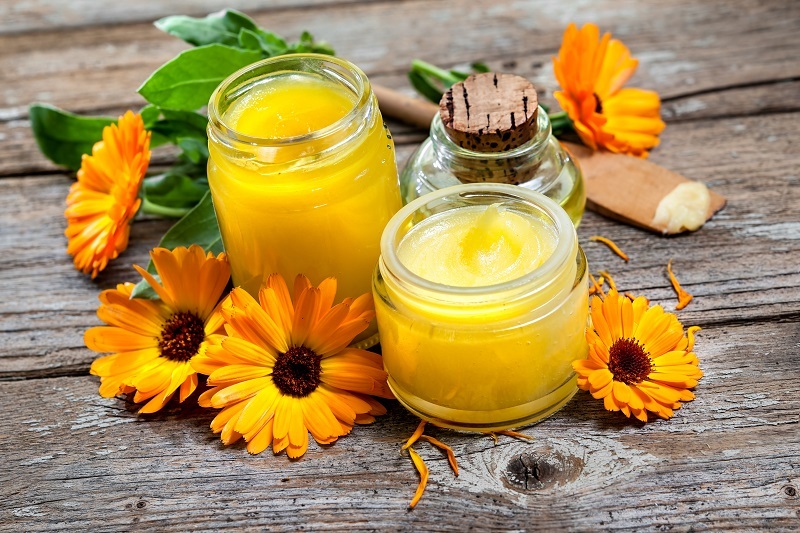How to Preserve the Freshness of Your Cut Flowers
Posted on 23/08/2025
How to Preserve the Freshness of Your Cut Flowers
Bringing cut flowers into your home instantly brightens your space and lifts your spirits. However, one challenge enthusiasts often face is keeping those beautiful fresh bouquets looking vibrant and lively for as long as possible. If you're wondering, how to preserve the freshness of your cut flowers effectively, you've come to the right place. This comprehensive guide reveals all the essential tips, tricks, and best practices to help your floral arrangements last longer, making your investment worthwhile and your home more beautiful.
Why Do Cut Flowers Lose Their Freshness?
Cut flowers, no matter how carefully arranged, have a finite lifespan. Understanding the main factors behind wilting and decay can help you devise strategies to delay them:
- Lack of water supply: Once flowers are cut, they lose access to their roots, disrupting their natural hydration process.
- Bacterial growth: Bacteria thrive in the water, clogging stems and shortening the life span of your flowers.
- Exposure to ethylene gas: Ripening fruits and decaying materials release ethylene gas, which accelerates flower aging.
- Improper temperature or sunlight: Excess heat and direct sunlight can speed up wilting.
- Incorrect cutting techniques: Poor stem cuts can hinder water uptake, leading to premature drooping.
By addressing these factors, you can significantly improve the freshness and longevity of your cut flowers.

Best Practices for Cutting and Bringing Flowers Indoors
Preserving flower freshness begins even before you arrange them in a vase. Here's how you can ensure they have the healthiest start:
1. Choose the Right Time to Cut Flowers
The best time to cut your blooms is in the early morning or late evening when temperatures are cooler and plant stems are filled with water. Avoid midday, as heat can cause dehydration.
2. Use Clean and Sharp Tools
Always use sterilized, sharp scissors or garden shears to prevent crushing stems and introducing bacteria. Clean tools help extend the fresh life of your cut blooms.
3. Cut at an Angle
Trimming stems at a 45-degree angle increases surface area for water absorption and prevents the stem from resting flat at the bottom of the vase.
4. Remove Lower Leaves
Before arranging, strip off any foliage that would sit below the waterline. Leaves submerged in water rot and support bacteria growth, diminishing flower freshness.
Preparing the Vase for Maximum Flower Longevity
A clean vase is critical for keeping cut flowers fresh:
- Wash the vase with hot, soapy water and rinse thoroughly to eliminate any lingering bacteria.
- Rinse with a mild bleach solution (1 part bleach to 10 parts water) for extra sterilization.
- Ensure the vase is completely clean and free of residues before use.
A clean vase prevents contaminants from reaching your flowers and helps maintain the vitality of your bouquet.
How to Mix the Best Water Solution for Cut Flowers
Plain tap water is good, but optimizing your vase solution can do wonders for keeping floral arrangements fresh. Here's how:
Use Lukewarm Water
Fill your vase with lukewarm (not hot or cold) water. Warm water is readily absorbed and helps jumpstart hydration, except for bulbs like tulips or daffodils, which prefer cold water.
Add Flower Food
Commercial flower food packets are a blend of sugar (nourishment), acid (to balance pH), and biocide (to inhibit bacteria). Always follow the instructions for dilution. If you've run out, try this homemade solution:
- 1 quart of water
- 2 tablespoons lemon juice or white vinegar
- 1 tablespoon sugar
- 1/2 teaspoon household bleach
This mix helps nourish the flowers, ward off bacteria, and maintain a clean environment for your stems.
Arranging and Caring for Your Cut Flowers
The way you arrange and tend your bouquet affects how long your floral display remains fresh and beautiful. Here are some top care tips for cut flowers:
1. Re-Cut Stems Before Placing in Vase
After arriving home or before arranging, re-trim 1-2 inches off each stem at an angle under running water. This minimizes air bubbles and facilitates maximum water uptake.
2. Change Water Every Two Days
Fresh, clean water is vital. Replace the water every 48 hours (or daily, if possible), and re-trim 1/2 inch from each stem to boost hydration and reduce bacteria build-up.
3. Keep Flowers Away from Heat and Sun
Always set your bouquet away from direct sunlight, radiators, heating vents, and even electronics, as heat quickly dehydrates flowers and speeds up the wilting process.
4. Avoid Placing Near Ripening Fruit
Fruits emit ethylene gas, a natural plant hormone that causes blooms to age more rapidly. For maximum floral longevity, display bouquets far from fruit bowls and compost bins.
5. Remove Faded Flowers Promptly
Regularly inspect your arrangement and remove wilting blooms. Decaying petals not only look unsightly but also release ethylene gas and encourage bacteria, which can spoil the rest of the bouquet.
6. Mist Petals Occasionally
Lightly misting petals with clean water can help maintain humidity for certain varieties, although do check your flower type--some petals are prone to mold if left wet.
Special Tips for Specific Flower Types
Some flowers require extra attention to preserve their freshness. Here are guidelines for popular cut flowers:
- Roses: Remove any thorns and cut stems underwater to prevent air bubbles. Change water daily and keep them cool.
- Tulips: Use cold water and keep out of direct sun. Tulip stems grow even after cutting--keep trimming the ends regularly!
- Hydrangeas: Are prone to wilting. Submerge the whole flower head in cool water for 30 minutes if stems become limp, then re-cut and arrange.
- Lilies: Remove pollen from the stamens to prevent petal staining and increase longevity.
- Sunflowers: Require lots of water and benefit from daily stem trimming.
Pro Hacks: How to Further Extend the Life of Floral Arrangements
Looking for next-level secrets? Try these expert hacks to optimize flower freshness:
- Add vodka or clear soda: A splash of vodka or Sprite helps curb bacterial growth and provides sugar for nourishment.
- Penny in the vase: The copper in pennies acts as a natural fungicide and can help keep water cleaner.
- Aspirin in water: Crush an aspirin into the vase water; its acidity can help keep stems clear.
- Store overnight in a cool spot: If possible, move your arrangements into a refrigerator or cool room overnight to slow down wilting.
Note: Results vary by flower species and water quality. Test in moderation for best effect.
Common Mistakes That Shorten Cut Flower Freshness
Even with the best intentions, you might inadvertently be damaging your blooms. Here's what to avoid:
- Leaving stems out of water: Always hydrate stems as quickly as possible after cutting.
- Using dirty vases or tools: Bacteria is the enemy of longevity; sanitize everything!
- Neglecting water changes: Old, murky water kills flowers quickly.
- Placing flowers in drafts or heat: Even ceiling fans, heaters, or air vents can rob your bouquet of moisture.
Preserving Cut Flowers: Myths and Facts
There is a lot of advice out there on preserving the freshness of cut flowers. Let's separate fact from fiction:
-
Myth: Flowers last longer in pure water only.
Fact: Using the proper vase solution and flower food is the best way to feed and protect your flowers. -
Myth: All flowers should be stored cold.
Fact: Some flowers, like tropical blooms, last longer at room temperature. -
Myth: Adding aspirin, soda, or pennies always works.
Fact: These hacks can help but results depend on flower type and water quality.

Frequently Asked Questions on Flower Freshness
How long should cut flowers last?
With proper care, most cut flower bouquets last 5-14 days, depending on the flower variety and environment.
Is refrigeration safe for all flowers?
Most flowers benefit from cool temperatures at night, but tropical flowers and orchids may suffer in excess cold.
Can I revive wilted flowers?
Sometimes, yes. Re-cut the stems, change the water, and submerge stems (and even heads for hydrangeas) in cool water for a few hours.
Conclusion: Enjoy the Freshness of Your Cut Flowers
Preserving the freshness of your cut flowers does not have to be complicated. By following these proven tips--from making the first cut to proper vase maintenance and routine care--you can extend the life of your floral arrangements and keep your home looking beautiful with vibrant blooms. Remember to avoid common mistakes, test fun hacks, and provide a nurturing environment for your flowers.
With a little attention and care, you'll enjoy the freshness, fragrance, and color of your fresh cut flowers for days and even weeks--making every bouquet a lasting treasure.
Latest Posts
Hidden Wonders: 8 Facts About Sunflowers
Uncovering the Mysteries: 7 Facts About Tulips You Didn't Know
How to Preserve the Freshness of Your Cut Flowers





